Start Date
18-8-2021 10:00 AM
End Date
18-8-2021 11:00 AM
Subjects
Formative evaluation, Summative evaluation, Evaluation needs, Arithmetic, Mathematical concepts, Measurement, Primary school mathematics, Teaching innovations, Classroom observation techniques, Learning communities, Case studies
Abstract
There is widespread agreement about the importance of accounting for the extent to which educational systems advance student learning. Yet, the forms and formats of accountable assessments often ill serve students and teachers; the summative judgements of student performance that are typically employed to indicate proficiencies on benchmarks of student learning commonly fail to capture student performance in ways that are specific and actionable for teachers. Timing is another key barrier to the utility of summative assessment. In the US, summative evaluations occur at the end of the school year and may serve future students, but do not help teachers better support the students who were tested. In contrast, formative assessments provide actionable grounds to improve the quality of instruction on the basis of both the granularity and specificity of their content and their timing. Unfortunately, the psychometric qualities of formative assessments are often unknown. I describe an innovative approach to assessment that aims to blend the productive characteristics of both summative and formative assessment. The resulting assessment system is accountable to students and teachers by providing actionable information for improving classroom instruction, and at the same time, it addresses the demands of psychometric quality for purposes of system accountability as it is currently practiced (in the US). The innovative assessment system relies on partnership with teachers to generate (1) a shared conceptual frame for describing instructional goals and valued forms of teaching and learning; (2) a set of electronic tools to help teachers detect, share, analyse, and interpret student learning data; and (3) classroom and school-level community professional development structures to support and sustain a widespread practice of assessing to guide instruction. These features are coupled with new psychometric models, developed by the Berkeley Evaluation and Research Center, that provide more robust estimates of student learning by linking information from multiple sources, including student classroom work, student responses to formative assessments, and summative evaluations. (Mark Wilson will address the psychometric modeling during this conference.) Here I describe challenges and prospects for this innovation with a case study of its implementation in a K–5 elementary school that is seeking to improve the quality of instruction and students’ understandings of measure and rational number arithmetic.
Recommended Citation
Lehrer, R. (2021, August 16-20). Accountable assessment [Keynote presentation]. Research Conference 2021: Excellent progress for every student: Proceedings and program. Australian Council for Educational Research. https://doi.org/10.37517/978-1-74286-638-3_9
Creative Commons License

This work is licensed under a Creative Commons Attribution-NonCommercial-No Derivative Works 4.0 International License.
Copyright Statement
Copyright 2021 Richard Lehrer. Licensed under Creative Commons Attribution NonCommercial NoDerivatives 4.0 International
Place of Publication
Melbourne Australia
Publisher
Australian Council for Educational Research
ISBN
978-1-74286-638-3
DOI
https://doi.org/10.37517/978-1-74286-638-3_9
Geographic Subject
United States
Included in
Educational Assessment, Evaluation, and Research Commons, Elementary Education Commons, Science and Mathematics Education Commons
Accountable assessment
There is widespread agreement about the importance of accounting for the extent to which educational systems advance student learning. Yet, the forms and formats of accountable assessments often ill serve students and teachers; the summative judgements of student performance that are typically employed to indicate proficiencies on benchmarks of student learning commonly fail to capture student performance in ways that are specific and actionable for teachers. Timing is another key barrier to the utility of summative assessment. In the US, summative evaluations occur at the end of the school year and may serve future students, but do not help teachers better support the students who were tested. In contrast, formative assessments provide actionable grounds to improve the quality of instruction on the basis of both the granularity and specificity of their content and their timing. Unfortunately, the psychometric qualities of formative assessments are often unknown. I describe an innovative approach to assessment that aims to blend the productive characteristics of both summative and formative assessment. The resulting assessment system is accountable to students and teachers by providing actionable information for improving classroom instruction, and at the same time, it addresses the demands of psychometric quality for purposes of system accountability as it is currently practiced (in the US). The innovative assessment system relies on partnership with teachers to generate (1) a shared conceptual frame for describing instructional goals and valued forms of teaching and learning; (2) a set of electronic tools to help teachers detect, share, analyse, and interpret student learning data; and (3) classroom and school-level community professional development structures to support and sustain a widespread practice of assessing to guide instruction. These features are coupled with new psychometric models, developed by the Berkeley Evaluation and Research Center, that provide more robust estimates of student learning by linking information from multiple sources, including student classroom work, student responses to formative assessments, and summative evaluations. (Mark Wilson will address the psychometric modeling during this conference.) Here I describe challenges and prospects for this innovation with a case study of its implementation in a K–5 elementary school that is seeking to improve the quality of instruction and students’ understandings of measure and rational number arithmetic.


